My Dad served in the U.S. Army in World War II and also served in the Korean conflict. Sometimes, when I was a wide-eyed kid, he would tell me stories about when he took a sword off of a Japanese officer, about heroes all around him, Imperial Japanese Marines attacking in waves and also the day the guns went quiet. He would sit and watch war films with me all the time, correcting the history of the movie, nit-picking details and throwing in bits of trivia about Guadalcanal, the liberation of the Philippines, the days leading up to the bombings of Hiroshima and Nagasaki.
Some of my favorite stories he told me dealt with the occupation of Japan after they surrendered. He played in a band in Kobe for a while and counted the days until he could come home to San Diego. He spared me most of the gory details, but it was evident that war was Hell. I often wondered why he’d sit through reminders of the horrors he lived through as an 18 year-old? Years later, during the Los Angeles riots, I fled my home in Reseda and headed south, back home to San Diego, to the safety of my Mom and Dad’s sofa. Seeing Humvees loaded with National Guardsmen, dead serious looks on their faces and smoldering cars on the side of the 405, I could not wait to escape the terror I’d lived in for the past few days. I got to my parents’ house and he greeted me at the door, with one of his typical Leo Buscaglia hugs. “How ya holding up, Champ?” he asked. “Liked I want to scream, laugh, pass out and cry all at once,” I said. The look on his face told me he understood. Oddly enough, he was watching “Patton” when I pulled in the driveway. Well, not that odd; I’m pretty sure it was his favorite film. For a guy who never went to the movies, he dragged a family of ten to the theater to see George C. Scott on the big screen. He hated crowds, but loved the movie. I must’ve seen it 50 times growing up.
Through the years, in between viewings of “Patton,” he would sit me down to watch any and every war movie put to film. So, trying to come up with a ten best list was an epic failure. Here’s a bunch of war films I found compelling in one way or another.
Gallipoli (1981)
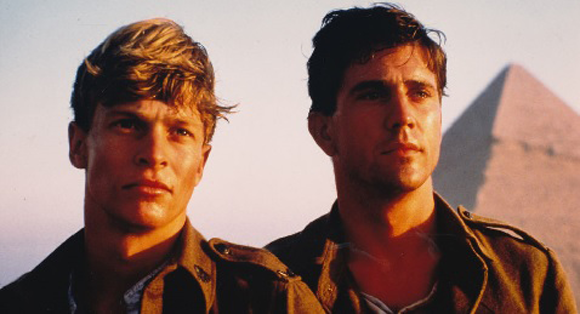
Director Peter Weir does a brilliant job here. It’s a tragic story of young Australian men heading off to war, full of romantic dreams of glory. As part of the ANZAC forces in World War I sent to fight the Turkish army at Gallipoli, they’re soon met with a harsh reality. The battle was brutal, and by the time it comes up in the film, you’re invested in these characters and their young lives. A young Mel Gibson will break your heart here. If he doesn’t, you were not paying attention.
Apocalypse Now (1979)
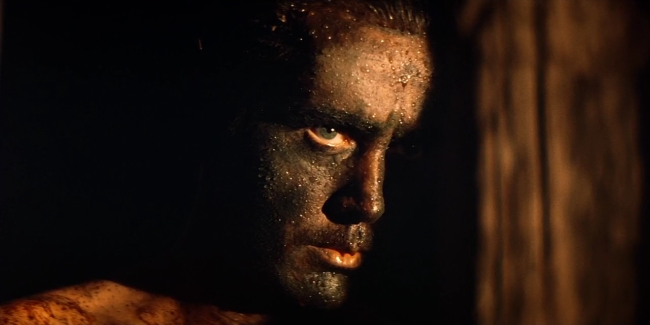
During the Vietnam War, Captain Willard is sent on a dangerous mission into Cambodia to assassinate the renegade colonel Kurtz who has set himself up as a god among a local tribe. Francis Ford Coppola made a film with layers of mystery and insanity fighting for supremacy. Martin Sheen, Marlon Brando and Frederic Forrest are very good here, but Robert Duvall brings batshit crazy to new levels.
The image of helicopters bent on destruction as “Ride of the Valkyrie” blasts is emotionally unsettling. Duvall as Col. Bill Killgore, orders some of his men to surf, shouting “Charlie doesn’t surf.” Then he wanders among the dead, leaving playing cards on their chests as a way to celebrate victory. A teenage Laurence Fishburne as Tyrone “Clean” Miller, manning the machine guns on a patrol boat is a reminder that the man has always been a fine actor. Brando’s meandering, low-key, diatribe at the end is both confusing and enlightening.
Das Boot (1981)
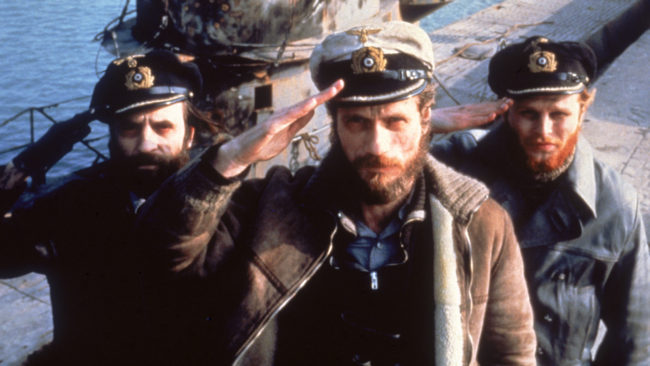
A gripping film about the experiences of a U-boat in World War II. War was Hell on both sides, even for the bad guys. But the human emotions of the German sailors comes through loud and clear in one of the best war films ever made. Cramped visuals, taught storytelling, Wolfgang Petersen is on top of his game. He made the similar feeling “Air Force One” years later, but it doesn’t capture the same feeling of impending doom. Jurgen Prochnow is brilliant as the captain. Due to the extreme camera noise from the cramped shooting, the film was shot silent, with the actors dubbing their dialogue after filming ended.
All Quiet on the Western Front (1930)
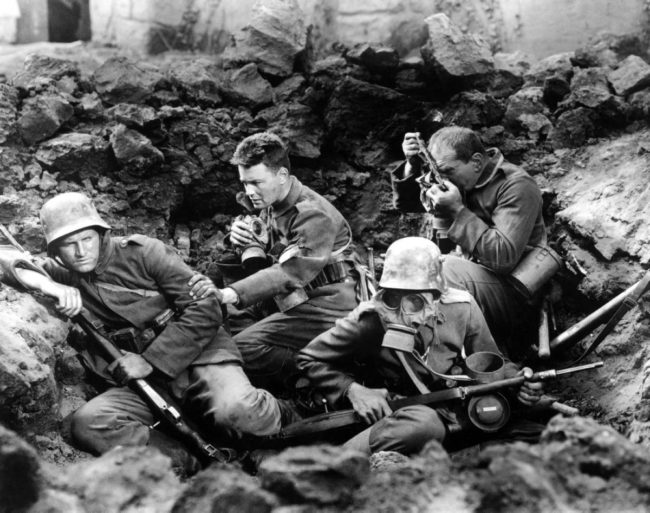
Trench warfare, gas attacks, no man’s land and the abject horror of the War to end Wars. Director Lewis Milestone caught all the things about war that were once seen as romantic and showed them for what they really were. Featuring great acting from Lew Ayres, Louis Wolheim, John Wray and Arnold Lucy, it is a warts and all story of a young soldier as he faces profound disillusionment. Adapted from a novel by German author Erich Maria Remarque. In Germany, Nazi Minister of the Interior Wilhelm Frick banned the film on the grounds that it represented Germans as cowards. Ironically, in neighboring Poland, that country’s censorship board proscribed the film on account of the film being too “pro-German.” It is also the first talkie film to win the Academy Award for Best Picture.
Schindler’s List (1993)
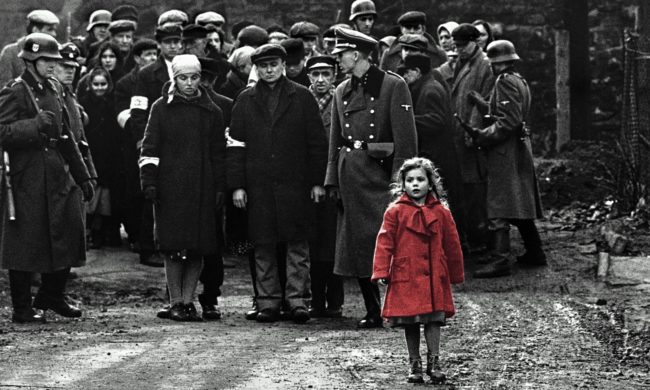
Steven Spielberg made a movie that can make you cry and give you hope all at once. In Poland during World War II, Oskar Schindler gradually becomes concerned for his Jewish workforce after witnessing their persecution by the Nazis. Based on a true story of a man who did not sit idly by and let the genocide happen without saving who he could. With Ralph Fiennes and Ben Kingsley turning in great performances.
There’s also this guy Liam Neeson in the title role. He’s quiet at all the right times, shrewd and one step ahead of Nazi oppression. To date, it is his most nuanced, fully-realized role.
Von Richthofen and Brown (1971)
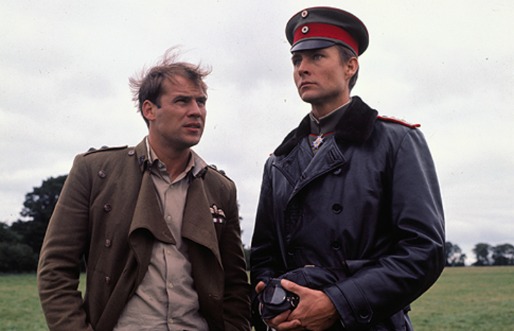
Roger Corman’s final directorial effort is the film, “Von Richthofen and Brown,” or “The Red Baron”. It is also his most compelling. The scenario is pretty well-known: it is World War I, and an allied squadron faces off against a German squadron in the skies over Europe, and dogfight, daily, for supremacy. It was a different time, a time when chivalry still counted for something. But it was a time that rapidly changed. During the switch from old world morals of war being a gentlemen’s game of blood-soaked chess to a high tech 20th century trench warfare to the death is where Manfred von Richthofen, the Red Baron, fights to keep chivalry alive and shoot down as many British planes as possible. Richtofen insists his pilots adhere to a strict code of conduct that his elite upbringing demands. His men comply in varying degrees. Enter Roy Brown, a Canadian flying for the Royal Air Corps. A common man. A mechanic. A nervous man who needs to drink milk to coat his stomach just so he can fly his missions. A natural-born pilot.
Brown and Richtofen face of in the air, fighting to outdo one another, and the 9 year-old inside me still thrills at the way Corman filmed the air combat sequences with his limited budget, re-used sets, and cast of regulars. “The Red Baron” worked for me then on one level and works now on another. I liked the action as a kid, and I realize, now, that it was also a story of the ending of an era.
The Great Escape (1963)
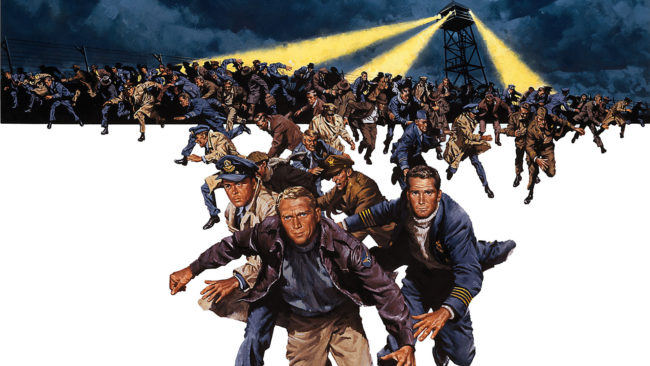
A well-filmed story of Allied P.O.W.s who plan for several hundred of their number to escape from a German camp during World War II. About the only thing you really need to know about this movie is that it stars Steve McQueen and he is the dude that all other dudes want to be at some point in their lives. Cool, measured and always ready for action – he’s Steve friggin’ McQueen. Oh yeah, it also stars James Garner, Richard Attenborough and Charles Bronson. It was directed by John Sturges and has plenty of actual moments of drama and action. But most of all, it stars Steve McQueen.
Battleship Potemkin (1925)
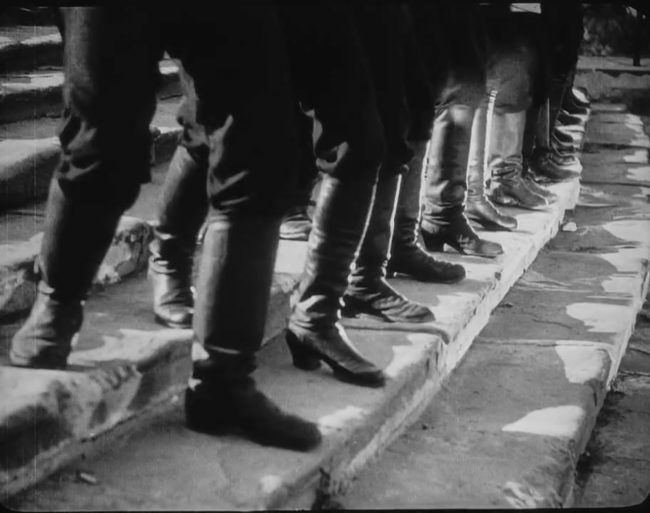
Sergei Eisenstein’s 1925 film is basically a revolutionary call for action. It’s also one of the best films about war/revolt ever made.
Set in 1905 and depicting that year’s revolution, Potemkin is a story about the mutiny of the ship’s crew in Odessa harbor. After being served maggot-infested meat and having the captain order the execution of the dissidents, all Hell breaks loose. The revolutionary leader is not only killed, but his body is taken ashore to lie in state. The townspeople race to the ship in fishing boats, bringing supplies to the sailors’ aid. The gathering on a breathtaking, crowded flight of steps overlooking the harbor, is a site to behold. Pity it does not last long.
The Cossacks arrived to restore order. What they get instead is a massacre of townsfolk running for their lives, trampling one another, falling dead from the hail of bullets, courtesy of row after row of czarist troops. The sequence on the Odessa steps is simply a ballet put to film if ballet were a bloody massacre. When a naval squadron is sent to retake the battleship, they let it pass by unharmed instead. Eisenstein’s non-historically accurate ending is open-ended, thus indicating that this was the seed of the later Bolshevik revolution that would bloom in Russia. The film is broken into five parts: Men and Maggots, Drama on the Quarterdeck, An Appeal from the Dead, The Odessa Steps, and Meeting the Squadron.
Not a historically accurate picture, but a brilliant silent film with fine cinematography nonetheless.
The Hurt Locker (2008)
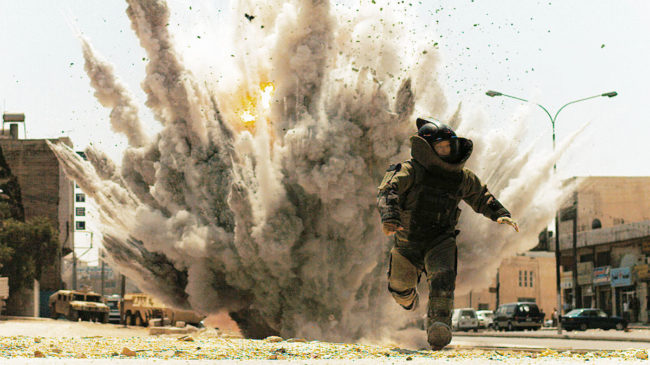
During the Iraq War, a Sergeant gets assigned to an army bomb squad and is put at odds with his squad mates because of the cavalier manner in which he goes about his job. Director Kathryn Bigelow won an Academy Award for Best Director, deservedly so. Starring Jeremy Renner, Anthony Mackie, Brian Geraghty and Guy Pearce, it’s a good cast doing a solid job of portraying military personnel with a dangerous job. There were plenty of 16mm cameras used to film scenes in a documentary style, giving the microscopic budgeted film an edgy, unsettling feel.
The Bridge on the River Kwai (1957)
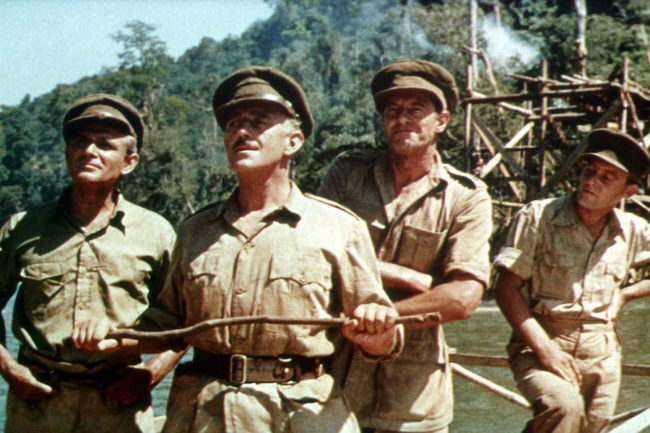
War in the Pacific through David Lean’s eyes. Alec Guinness stars as a British Colonel who settles his differences with a Japanese PoW camp commander, and oversees his men’s construction of a railway bridge for their captors – while oblivious to a plan by the Allies to destroy it. It always struck me as odd that he was so proud of the finished product, but disappointed that it was destroyed. Building the bridge helped keep his men sane and alive, but its destruction probably saved thousands of lives. Sessue Hayakawa is an anchor holding this film together. William Holden was great.
Saving Private Ryan (1998)
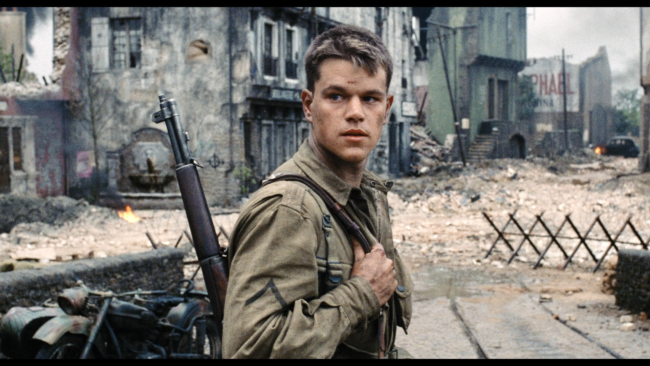
The opening sequence of an up-close view of the nightmare that was D-Day makes this a classic. Graphic, raw and jagged, it is difficult to keep centered. The noise, the confusion and the swirling chaos of that day was most assuredly far worse than what Steven Spielberg caught on camera. But what he did get is bone chilling. Following the Normandy Landings, a group of U.S. soldiers go behind enemy lines to retrieve a paratrooper whose brothers have been killed in action. Tom Hanks plays the Captain with pain in his eyes and the sober look of a man who has seen too much death and destruction.
Patton (1970)
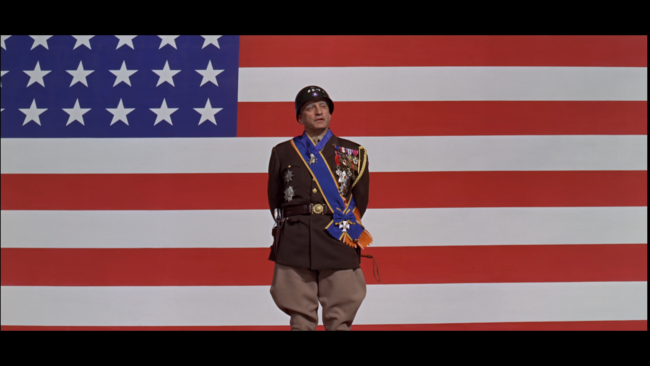
There are nights when I’m channel surfing and I come across “Patton” and I pause long enough to marvel at how perfectly George C. Scott was suited to portray the controversial General George S. Patton. From the opening address to his troops, to the sands of Northern Africa and onto Europe, Patton earned the title “Old Blood and Guts,” and more. The term epic applies to this movie as it encompasses the life of a man larger than life and certain of his own genius. Karl Malden is also great as General Omar Bradley.
The Deer Hunter (1978)
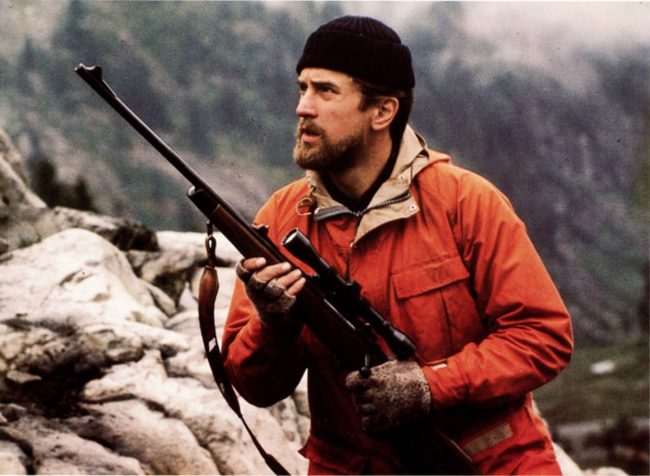
The Deer Hunter is more of a think piece on the effects of war on people’s lives than it is an actual war film. Michael Cimino directs an in depth examination of the ways the Vietnam war changed America as a whole and how much of a mess it makes of the lives of people in a small industrial town in Pennsylvania. Christopher Walken and Robert De Niro carry this film, but get solid support from John Cazale, John Savage and Meryl Streep. The studio wanted to replace Cazale when he was ruled uninsurable. De Niro ended up putting up the money for the insurance. Sadly, Cazale died shortly after filming was completed.
In what can only be method acting gone too far, the slapping in the Russian roulette sequences was 100 percent authentic. It has been reported that the actors grew highly agitated by the constant slapping, which only added to the realism and heightening tension of the scenes. The wedding sequence goes on for almost an hour, but it does not drag; in fact, it is the emotional heart of the film.
Full Metal Jacket (1987)
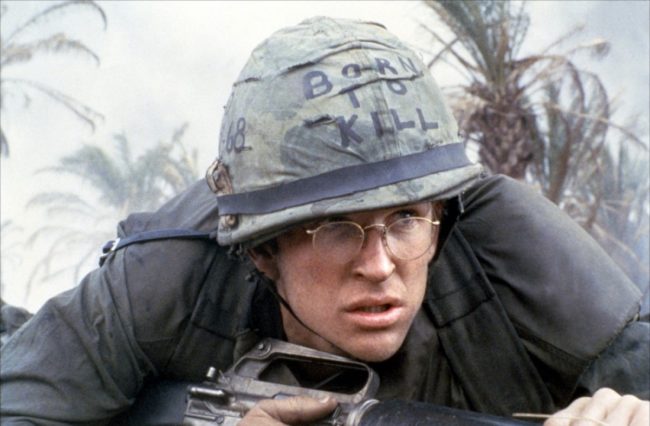
Matthew Modine is a pragmatic U.S. Marine stuck in the middle of a group of his fellow recruits. He is cursed with observing the dehumanizing effects of boot camp and the Vietnam War. Stanley Kubrick directs this sprawling film covering induction day through a brutal firefight in Hue. R. Lee Ermey and Vincent D’Onofrio play off each other in a way that is both a visual ballet and a train wreck waiting to happen.
